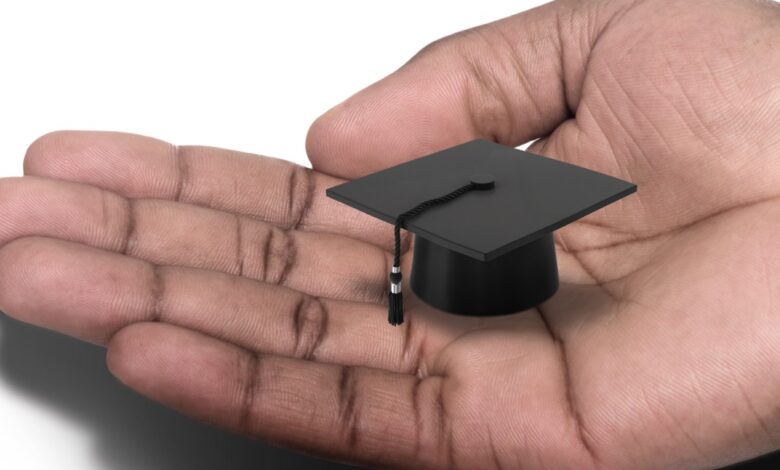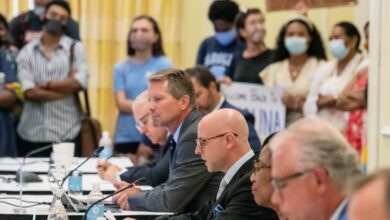This College’s Tuition-Free Model Will Let Students Pay What They Can Post-Graduation

A small liberal-arts college in Michigan has announced plans to go tuition-free, in the hope that students will “pay it forward” after graduation.
Hope College is launching a pilot program it calls “Hope Forward” this fall, providing endowed, full-tuition scholarships for 22 incoming freshmen, with a plan to expand it to the entire student body over time.
“College is priceless, but it’s gotten way too expensive,” said Matthew Scogin, the president of Hope College.
Students will be encouraged to invest after, as opposed to before, they receive an education at Hope. The collegewide strategy was unanimously approved by the Board of Trustees in January and hinges on its ability to increase the endowment by more than $1 billion — a feat that could take about a decade.
Since Scogin envisioned the plan in 2019, the college has raised more than $30 million toward the effort.
“We want to move away from the idea that students are customers,” Scogin said. “We actually think it’s toxic for a healthy learning environment to treat students like customers.”
The private Christian college isn’t the first to bolster fund raising to decrease tuition costs.
The Cooper Union for the Advancement of Science and Art, in New York, started out tuition-free before it buckled under the pressure in 2013 and reduced its full-tuition scholarships for undergraduates to 50 percent. Five years later, the college announced a recommitment to free tuition with a plan to raise $250 million over 10 years.
St. John’s College, which has campuses in Santa Fe, N.M., and Annapolis, Md., has been cutting tuition costs for students in recent years since it shifted to a philanthropy-centered funding model to sustain a $17,000 tuition decrease. In 2018, the college set a $300-million fundraising goal, with $200 million going toward its endowment.
Hope’s undergraduate tuition and fees totaled more than $35,300 last year, but factoring in scholarships and other financial aid, the average student pays less than $20,000, according to Scogin. And about 15 percent of the college’s students receive full support for tuition, which includes scholarships and merit- and need-based awards from outside the college.
While Scogin acknowledges his plan is ambitious, he is encouraged by how much money Hope has already raised prior to the public announcement of the program. With funding from an anonymous donor, the college plans on conducting another pilot cohort in the fall of 2022.
But Scogin doesn’t expect to reach the tuition-free goal anytime soon. He sees it as a long-term commitment to a new financial model.
“We’ve got a long way to go,” Scogin said.
As states pull back on higher-education funding, many institutions have had to take matters into their own hands, experts say.
Before the pandemic, colleges were already seeing increased financial pressure. Now, as the cost in delivering education continues to rise, the pressure on these institutions has intensified, said David V. Rosowsky, vice president for research at Kansas State University.
“They’re going to have to expand their thinking a little and how they generate the revenue they need so that they can keep their education affordable for students,” Rosowsky said. “Historically, you just jacked up tuition every year. You can’t do that anymore.”
Philanthropy-based solutions are becoming more common, according to Linda Durant, the vice president for development at the nonprofit Council for Advancement and Support of Education.
“There is a heavy emphasis right now for many public and private institutions to raise more scholarship funds,” Durant said.
But Rosowsky has doubts about the shelf life of the free-tuition model. He says its success is contingent upon the financial security of the college or university.
“Unless there’s a very, very deep pocket below them, they may only have a finite life,” he said.
Hope College’s strategy aims to strengthen its alumni network so that, eventually, students who graduated from the program will be sustaining the students coming in. One of the college’s other goals was expanding its geographical diversity, which is why the applications for this year’s pilot program were only available to those from states outside of the Midwest, Scogin said. He added that racial diversity is also a priority in the Hope Forward strategy; 50 percent of students accepted were nonwhite, and 30 percent of students were international. Interested applicants also had to meet a GPA requirement of 3.0 or above and answer an essay prompt about an area of hopelessness to which they wanted to bring hope. The finalists were interviewed over Zoom.
Scogin hopes that not having to worry about tuition will free students from this cohort to pursue their dreams after graduation.
“Many students find a way to sort of scrape by and afford college, but they do it with a big amount of debt,” Scogin said. “And then after they graduate, they end up giving up on their dreams because they have so much debt that they have to find a job that will pay the bills.”
Source link






